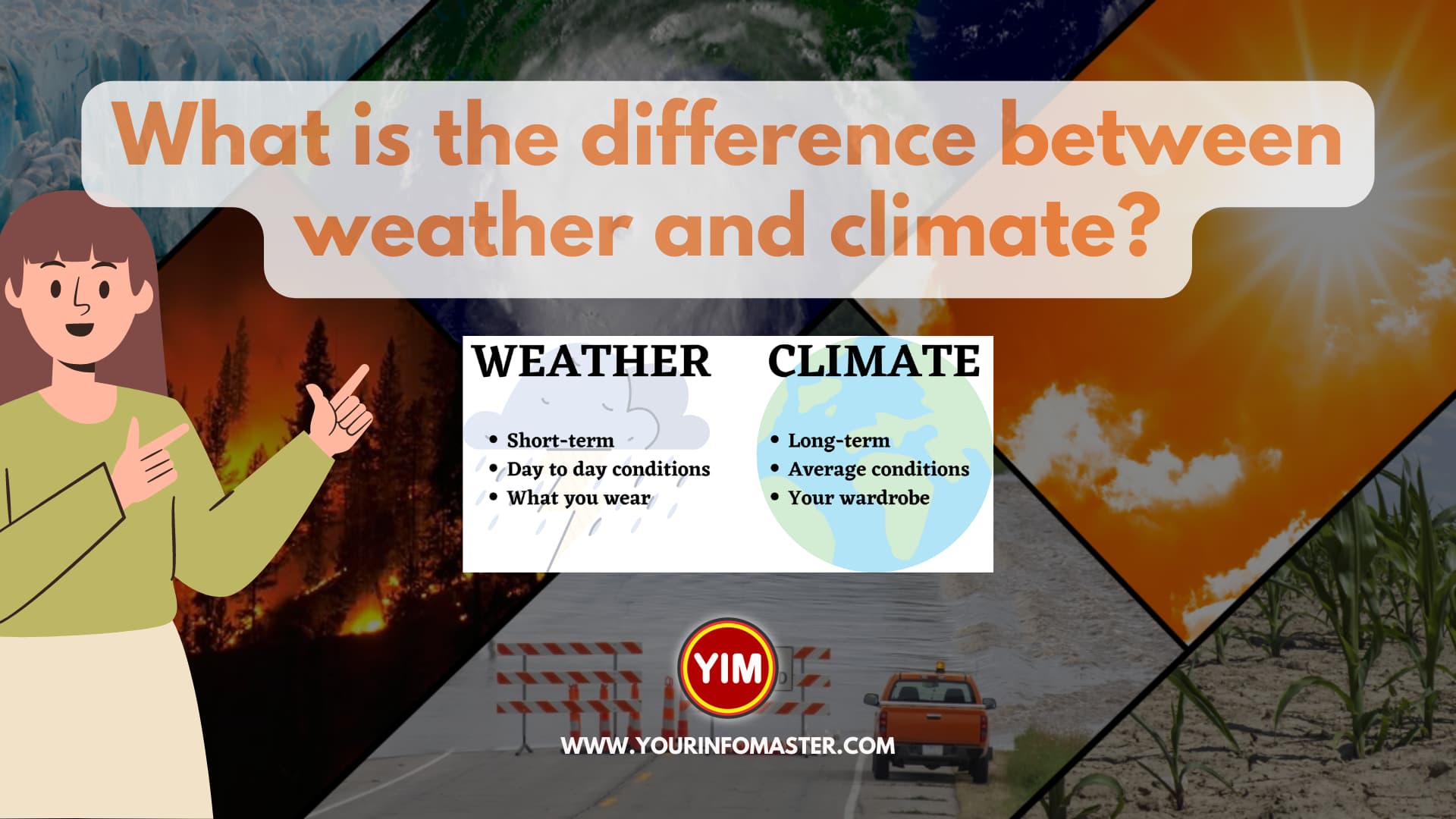I am going to explain the blog post “What is the difference between weather and climate?“.
Weather and climate are two terms that are often used interchangeably, but they actually refer to different things. While weather is the day-to-day state of the atmosphere, including temperature, precipitation, and wind, climate refers to the long-term patterns of weather in a particular region or across the globe.
The distinction between weather and climate is an important one, as it helps us understand how the Earth’s atmosphere behaves over time. Weather patterns can vary widely from day to day and from place to place, while climate patterns are more consistent and can help us predict what kind of weather to expect in a particular region.
In this blog post, we will dive deeper into the difference between weather and climate, exploring how they are measured, what factors influence them, and how they are connected. By the end of this post, you will have a clearer understanding of these two important concepts and how they impact our daily lives.
Check also: Water Intake Calculator
10 Differences between weather and climate
Here is a list of 10 differences between weather and climate:
1. Timeframe
The most fundamental difference between weather and climate is the timeframe over which they are measured. Weather refers to short-term atmospheric conditions, typically over hours, days, or weeks. Climate, on the other hand, refers to long-term patterns of weather over years, decades, or even centuries.
2. Spatial scale
Weather conditions can vary significantly over small distances, while climate patterns tend to be more consistent over larger regions. For example, it’s possible to have rain in one part of a city while another part remains dry, but the overall climate of the region may be characterized by a certain amount of annual precipitation.
3. Variability
Weather conditions are highly variable and can change rapidly, while climate patterns tend to be more stable over time. For example, a heat wave or a sudden storm can cause significant changes in local weather conditions, but the overall climate of a region is less likely to experience sudden shifts.
4. Frequency
Weather events like thunderstorms or snowstorms occur more frequently than climate events like droughts or heat waves, which tend to be rarer and more prolonged.
5. Predictability
Weather conditions are often difficult to predict more than a few days in advance, while climate patterns can be predicted with greater accuracy over longer periods. This is because weather is influenced by a wide range of factors, including local geography, atmospheric pressure systems, and seasonal changes, which can be difficult to model accurately.
6. Drivers
Weather is primarily driven by short-term factors like temperature, humidity, and air pressure, while climate is influenced by long-term factors like greenhouse gas concentrations, ocean currents, and solar radiation.
7. Impacts
Weather events like hurricanes, tornadoes, and floods can have significant short-term impacts on human populations and ecosystems, while climate change is expected to have more gradual and long-term impacts on the planet as a whole, including rising sea levels, altered precipitation patterns, and changes to global ecosystems.
8. Measurement
Weather conditions are measured using instruments like thermometers, barometers, and anemometers, while climate patterns are measured using a wide range of methods, including tree-ring analysis, ice core samples, and historical temperature records.
9. Spatial and Temporal Resolution
Weather data can be measured and reported in real-time, with high spatial and temporal resolution. Climate data, however, is collected over much longer periods, with lower temporal and spatial resolution, which means that it is less detailed but more comprehensive.
10. Scope
Finally, weather is more localized and specific, while climate is global in scope. Weather events can affect a specific region or area, while climate patterns influence the entire planet and its biosphere.
Understanding these differences between weather and climate is crucial for making informed decisions about how to respond to changes in the Earth’s atmosphere, and for preparing for the impacts of climate change in the years and decades to come.
Conclusion
In conclusion, the difference between weather and climate is significant, and understanding these concepts is crucial for making informed decisions about how to respond to changes in the Earth’s atmosphere. While weather refers to short-term atmospheric conditions, climate refers to long-term patterns of weather in a particular region or across the globe. Weather is highly variable and influenced by short-term factors, while climate patterns are more stable and driven by long-term factors. Furthermore, weather events can have significant short-term impacts, while climate change is expected to have more gradual and long-term effects. By understanding these differences, we can better prepare for the impacts of climate change and work towards mitigating its effects on the planet.
If you really enjoyed the article “What is the difference between weather and climate?,” then I would be very grateful if you’d help it spread by emailing it to your friends or sharing it on Twitter, Instagram, or Facebook. Thank you!
Have you read “What is the difference between weather and climate?“ Which of these blogs are you reading, and how is it similar to one of them?
Read More
- What is the difference between business administration and business management?
- What is the difference between ACH and EFT?
- What’s the difference between universal studios and island of adventure?
- Can you mix two different Similac formulas?
- Can I take classes at two different colleges?
- What is the main difference between structured and unstructured data?
- What’s the difference between civil and criminal law?
- Can you share YouTube TV in different houses?
- What’s the difference between peacock and peacock premium?
- How is Aleve back and muscle different from regular Aleve?
- What is the difference between AAA and AAA plus?
- What is the difference between affect and effect?
- What is the difference between mass and weight?
- What is the difference between medicare and medicaid?







